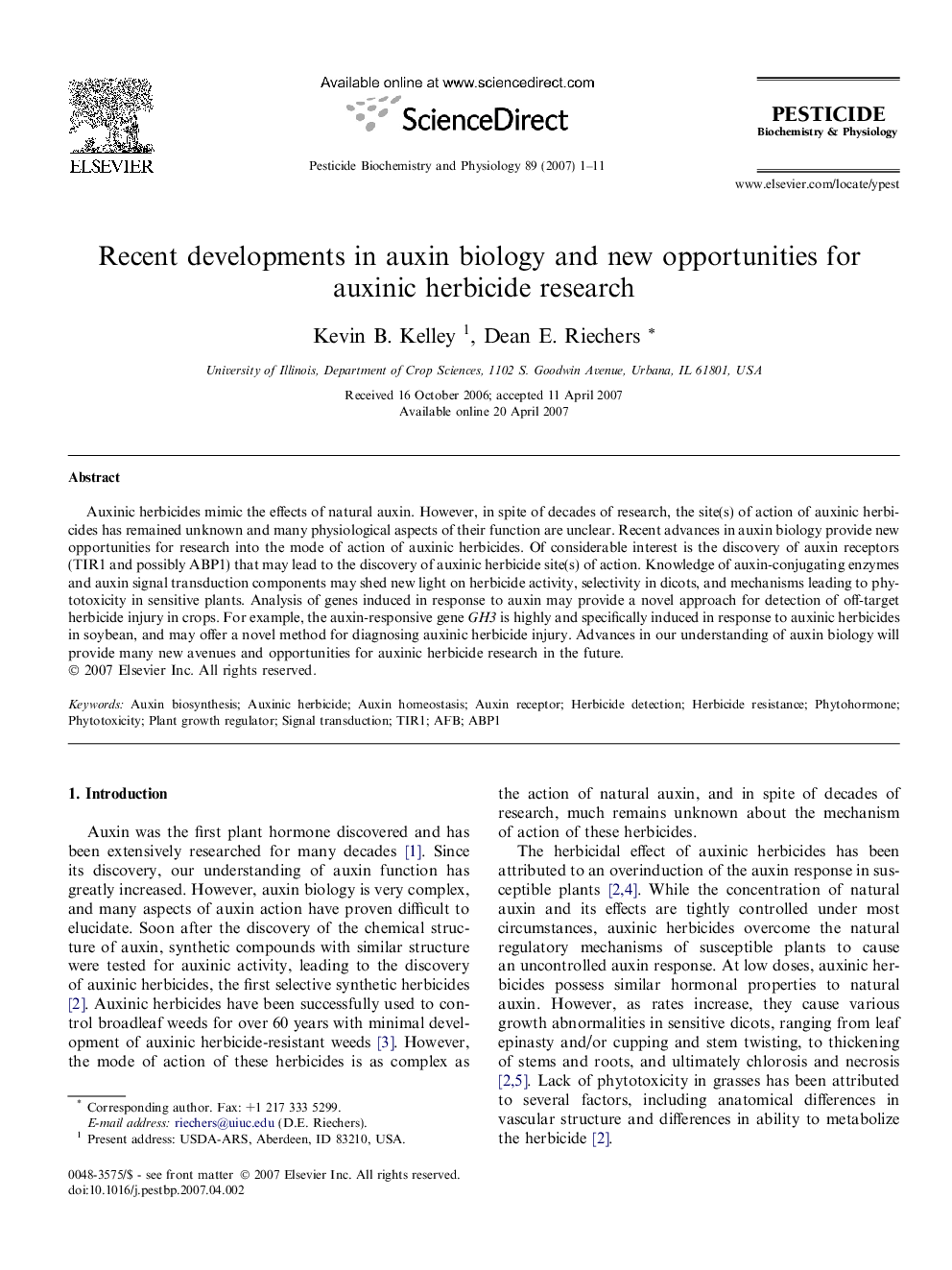| Article ID | Journal | Published Year | Pages | File Type |
|---|---|---|---|---|
| 2009745 | Pesticide Biochemistry and Physiology | 2007 | 11 Pages |
Auxinic herbicides mimic the effects of natural auxin. However, in spite of decades of research, the site(s) of action of auxinic herbicides has remained unknown and many physiological aspects of their function are unclear. Recent advances in auxin biology provide new opportunities for research into the mode of action of auxinic herbicides. Of considerable interest is the discovery of auxin receptors (TIR1 and possibly ABP1) that may lead to the discovery of auxinic herbicide site(s) of action. Knowledge of auxin-conjugating enzymes and auxin signal transduction components may shed new light on herbicide activity, selectivity in dicots, and mechanisms leading to phytotoxicity in sensitive plants. Analysis of genes induced in response to auxin may provide a novel approach for detection of off-target herbicide injury in crops. For example, the auxin-responsive gene GH3 is highly and specifically induced in response to auxinic herbicides in soybean, and may offer a novel method for diagnosing auxinic herbicide injury. Advances in our understanding of auxin biology will provide many new avenues and opportunities for auxinic herbicide research in the future.
